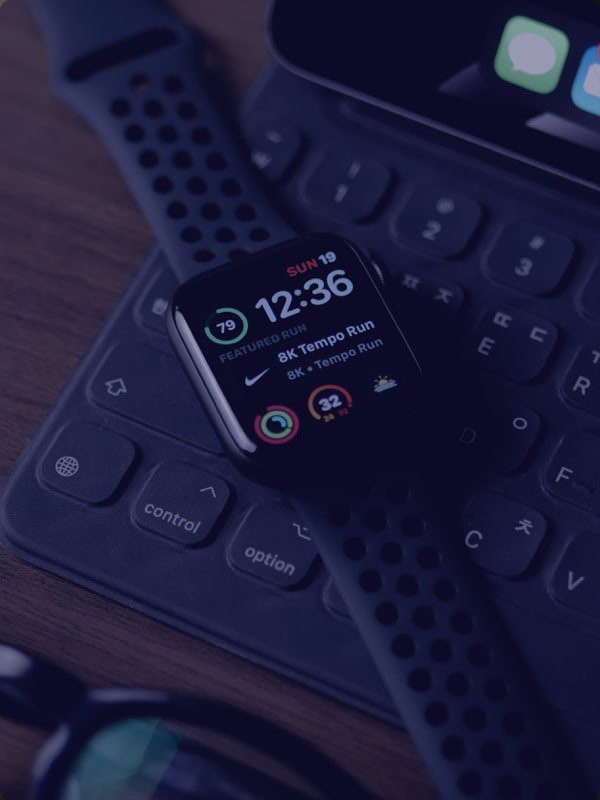Discover an Effective Low-Impact Home Workouts for Women Over 30
Introduction
Finding a low-impact home workouts routine that feels good, fits your schedule, and delivers real results can feel like searching for a hidden treasure. If high-intensity exercises leave your joints aching or you simply want a gentler way to care for your body, you’ve come to the right place. Low-impact workouts are a game-changer, especially for women navigating the beautiful changes that come after 30.
This guide is designed to introduce you to the world of effective, energizing, and joint-friendly exercises you can do from the comfort of your home. We’ll explore what low-impact exercise is, why it’s so beneficial, and how you can build a sustainable routine that supports your holistic wellness goals. Get ready to move your body in a way that feels supportive, empowering, and incredibly good.
What Is Low-Impact Exercise?
Think of low-impact exercise as a kinder, gentler way to move. The “impact” in exercise refers to the force exerted on your joints. High-impact activities like running or jumping involve moments where both feet leave the ground, creating a jolt when you land.
In contrast, low-impact workouts ensure at least one foot stays on the ground at all times. This simple difference dramatically reduces the stress on your ankles, knees, and hips. But don’t mistake “low-impact” for “low-intensity” or “easy.” These workouts can be incredibly challenging and effective, raising your heart rate and building serious strength without the jarring force. It’s all the reward without the risk, making it a smart and sustainable choice for long-term fitness.
Why Low-Impact Workouts Are Ideal After 30
As we enter our 30s and beyond, our bodies undergo subtle but significant shifts. Hormonal changes can affect bone density and muscle mass, and years of activity (or inactivity) can make our joints more sensitive. This is where the magic of low-impact workouts truly shines.
Instead of fighting against your body with punishing routines, you work with it. These exercises help you build and maintain strength in a way that honors your body’s current needs, reducing the risk of injuries that can set you back for weeks. They focus on controlled movements, core stability, and flexibility—all crucial components for feeling strong, vibrant, and resilient as you age. It’s a proactive approach to fitness that builds a foundation for a healthy, active life for decades to come, proving that you don’t need to pound the pavement to get a powerful workout.
Benefits of Low-Impact Home Workouts
Adopting a routine of low-impact home workouts offers a wealth of benefits that extend far beyond just being gentle on your body. It’s a holistic approach to wellness that nurtures you from the inside out.
Protects Joints and Prevents Injury
- This is the most celebrated benefit. By minimizing stress on your joints, you significantly lower your risk of sprains, strains, and chronic pain. This makes your fitness journey sustainable and enjoyable. For those looking to give their joints extra support, focusing on Joint Health through nutrition can be a powerful complement to a smart exercise routine.
- Boosts Mood and Reduces Stress
- Any form of exercise is a natural mood-lifter, thanks to the release of endorphins. Low-impact workouts like yoga and Pilates, however, often incorporate mindful breathing and focused movements that calm the nervous system. This powerful combination helps melt away tension and Reduces Stress more effectively than many high-intensity alternatives.
- Improves Strength and Flexibility
- From the controlled resistance in Pilates to the muscle-sculpting poses in Barre, low-impact workouts are fantastic for building lean muscle and improving your range of motion. They often target smaller stabilizing muscles that are missed in traditional workouts, leading to better posture, balance, and overall functional strength.
- Supports Heart Health and Weight Management
- Getting your heart rate up is essential for cardiovascular health, and you can absolutely achieve that without jumping. Activities like brisk walking, cycling, or a flowing yoga sequence provide excellent low-impact cardio at home. This helps improve circulation, manage weight, and boost your metabolism in a safe and sustainable way.
- Connects Mind and Body for Holistic Wellness
- Low-impact exercise encourages you to pay attention to your body’s signals. This mindful movement fosters a deeper connection between your physical self and your mental state, which is the cornerstone of Holistic Wellness. It transforms exercise from a chore into a form of self-care.
Types of Low-Impact Home Workouts
The beauty of low-impact exercise is its variety. There’s something for every mood and fitness level, ensuring you’ll never get bored. Here are some of the most popular and effective options you can do at home.
- Yoga: More than just stretching, yoga is a full-body workout that builds strength, improves balance, and enhances flexibility. Vinyasa or Power Yoga flows can provide a great cardio challenge, while Hatha or Restorative Yoga can calm your mind and release tension.
- Pilates: Pilates is a powerhouse for core strength. It focuses on precise, controlled movements that target your deep abdominal muscles, back, and pelvic floor. The result is a stronger, more stable center, which improves posture and reduces back pain.
- Barre: Inspired by ballet, Barre workouts use small, isometric movements to fatigue your muscles. Holding onto a chair for balance, you’ll perform tiny pulses and lifts that sculpt your thighs, glutes, and arms like nothing else. It’s known for creating long, lean muscle definition.
- Bodyweight Strength Training: You don’t need heavy weights to build strength. Modified push-ups (on your knees), squats, lunges, and planks are all fantastic low-impact exercises. They use your own body weight as resistance to build muscle effectively and safely.
- Walking and Cycling: Never underestimate the power of these classic activities. A brisk walk or a session on a stationary bike is a fantastic form of low-impact cardio at home. They are easy to start, great for your heart, and can be adjusted to any fitness level.
How to Get Started with a Routine
Starting a new routine is often the hardest part. The key is to make it feel manageable and exciting, not overwhelming. Follow these simple steps to build a plan that sticks.
- Set Clear, Achievable Goals: Instead of a vague goal like “get fit,” aim for something specific. For example, “I will do three 20-minute low-impact workouts each week.” Small, measurable goals provide a clear path to success and make it easier to build momentum.
- Schedule Your Workouts: Treat your workouts like any other important appointment. Block out time in your calendar, whether it’s first thing in the morning, during your lunch break, or in the evening. When it’s scheduled, you’re more likely to do it.
- Listen to Your Body: This is the golden rule of low-impact exercise. Some days you’ll feel energetic and ready for a challenge; other days, you may need something more restorative. Honor what your body is telling you. Pushing through pain leads to injury, while listening to your body leads to progress.
- Create a Balanced Weekly Plan: A good routine includes a mix of cardio, strength, and flexibility. For example, you could plan for two days of bodyweight strength training, one day of Pilates for core work, and two days of brisk walking or yoga for cardio and flexibility.
Essential (But Minimal) Equipment
One of the best things about home workouts is that you don’t need a gym’s worth of equipment to get started. With just a few key items, you can create a versatile and effective home fitness space. Investing in quality basics will enhance your comfort and help you get the most out of every session.
- A Quality Yoga Mat: This is non-negotiable. A good mat provides cushioning for your joints, a non-slip surface for safety, and a dedicated space for your practice. It mentally signals that it’s time to work out. Look for one that’s thick enough to be comfortable on your knees but not so thick that it compromises your balance.
- Resistance Bands: These are perhaps the most versatile and affordable fitness tool you can own. Resistance bands come in various strengths and are perfect for adding a challenge to bodyweight exercises. Use them for glute bridges, clamshells, and upper-body exercises to build strength without needing bulky dumbbells. They are lightweight, easy to store, and perfect for travel.
- Light Hand Weights: While many low-impact workouts rely on bodyweight, adding a set of light dumbbells (2-5 pounds) can increase the intensity of your strength training. They are great for adding resistance to arm exercises during a Barre workout or for moves like weighted lunges and squats. They help you build lean muscle tone and boost your metabolism.
Tips for Staying Consistent
Motivation can come and go, but consistency is what brings results. Here’s how to build a lasting habit.
- Find a Workout You Genuinely Enjoy: If you dread your workout, you won’t stick with it. Experiment with different types of low-impact exercise until you find what makes you feel good. When you look forward to moving your body, it stops feeling like a chore.
- Create an Uplifting Atmosphere: Your environment matters. Tidy up your workout space, play your favorite music, and let in some natural light. Making your workout feel like a special ritual can make all the difference. You can even incorporate it into a larger self-care practice, like a way to Create an Uplifting Atmosphere before you unwind for the night.
- Track Your Progress: Note how you feel after each workout. Are you sleeping better? Do you have more energy? Tracking these non-scale victories is incredibly motivating and reminds you why you started.
- Celebrate Your Achievements: Did you stick to your schedule for a whole week? Did you hold a plank for 10 seconds longer? Acknowledge and celebrate these small wins. Positive reinforcement is a powerful tool for building habits.
Frequently Asked Questions
How often should I do low-impact workouts? Aim for 3-5 times per week. A great goal is 150 minutes of moderate-intensity activity, which you can break up into 30-minute sessions.
Can I lose weight with only low-impact exercise? Absolutely. Weight loss is about creating a calorie deficit. Low-impact workouts, especially when combined with a balanced diet, can burn a significant number of calories and build metabolism-boosting muscle.
How long should a home workout session be? Even 15-20 minutes is beneficial! Aim for 20-45 minutes per session for the best results, but remember that any movement is better than no movement.
Are low-impact workouts good for building muscle? Yes. Resistance-based low-impact workouts like Pilates, Barre, and bodyweight training are excellent for building and toning muscle.
What’s the difference between low-impact and no-impact? Low-impact means one foot is always on the ground (e.g., walking). No-impact means there is very little force on the body at all, as you’re supported by water or a machine (e.g., swimming or cycling).
Can I do these workouts if I’m a beginner? Yes! Low-impact workouts are perfect for beginners because they are easy to modify and focus on proper form, reducing the risk of injury as you build your fitness foundation.
Do I still need to warm up and cool down? Definitely. A 5-minute warm-up (like marching in place and arm circles) prepares your muscles for exercise, and a 5-minute cool-down with gentle stretching helps improve flexibility and prevent soreness.


